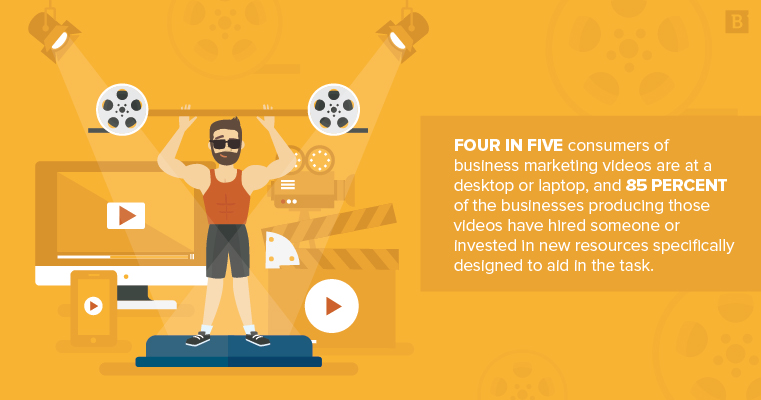Blame YouTube culture. Or Snapchat. Or Facebook – that’s certainly low-hanging scapegoat fruit lately. You can even blame Greta Gerwig, who capped a powerful Academy Awards montage by encouraging countless jokers with smartphones to channel their inner del Toro, proclaiming that “We need your movie!”
Thanks Greta. The true video professionals really appreciate that.
It was an instructive moment though, to be sure. On the same night Kobe Bryant (Kobe Bryant!) accepted the Oscar for Best Animated Short, here was an acclaimed young director using her platform to not only underscore gender disparities among Hollywood filmmakers but also, at least in part, to extol the virtues and simplicity of self-taught production.
It was on one hand an inspiring call to grassroots creativity, and on the other a sentiment that elicited many a shudder from professorial types and film aficionados alike. Moreover, it begged the question: Is that where we’re at now?
The answer, of course, is much more nuanced if you’re a business, or more specifically, a marketing professional within that business catering content offerings to other businesses.
B2B marketers are constantly wrestling with how to best utilize video as an asset, looking for that balance between producing from within and harnessing some combination of external services and do-it-yourself resources.
Shooting from the hip, for the sake of being hip
One thing is for certain – the pressure is real. B2B marketing departments throughout the United States and abroad have all but uniformly held the internal meetings, had the inner monologues, or in many cases, invested in the tools purportedly necessary to stay on the pulse of this new day in digital marketing. After all, from what we’ve all heard, videos are the new blogs, vlogs are the new testimonials and any content creator worth their digital dust needs to be executing across multiple mediums, man.
That applies to individuals, too. There’s a sense that a successful modern marketer must excel in more than one event. We all occasionally feel like we must be the Ben Franklins of content creation – writers, editors, photographers, strategists, analysts, designers and, yup, even videographers.
But to what end, exactly? What if yours is a smaller department – like, two- or three-people small? As we’ve discussed before, 53 percent of B2B marketers rely on a meager team to run ALL marketing operations, sometimes even just one person. If you’re that one person, bless you. You may be asking how, if at all, should you be leveraging DIY video resources if you’re working with a limited budget and have to allocate your time judiciously across of a number of disparate marketing initiatives?
To hear someone like Brafton Creative Director (and Obscure Spaghetti Western Guru) Perry Leenhouts tell it, in a word: savvily.
Get yourself in the game
“Lower budgets and a small crew doesn’t have to mean you can only produce a low-quality video with little to no production value,” Perry says. “Using a cell phone for snippets to be used on social channels is totally acceptable, and is a great way to show some personality and company culture. Teams on a budget can create stunning content through the use of stock footage, and clever storytelling. It all comes down to creativity, in concept and execution.”
In other words, establishing where and how you’ll deploy video content can be as important as the execution of the product. Ask yourself (or selves) what narrative you want to tell, and which tools at your disposal are best equipped to tell it. Perhaps most importantly – and as with any other single piece of content – ensure you know its audience. B2B marketers who have clear goals can cannily navigate social channels with a well-devised, even if relatively crude, video overture.
So, whether your objective is to speak to like-minded industry professionals on LinkedIn or to massage the message that resonates with your own YouTube channel, yes, have at it. Download that tutorial. Dabble in entry-level tools like iMovie or SnagIt. If the takeaways are on point, your viewers will get over the boom mic hanging over your the left shoulder of your on-screen “talent,” or the crumbs on your CEO’s collar.
As Perry chides: “There’s no excuse to sit on the sidelines. The online creative community is all about sharing: sharing skills, techniques, and results.”
What’s the purpose of this production proliferation?
Four in five consumers of business marketing videos are at a desktop or laptop, per Hubspot, and 85 percent of the businesses producing those videos have hired someone or invested in new resources specifically designed to aid in the task. So clearly the supply and demand are both there, on either end of the B2B marketing funnel.
But who wants to be known as Faceless Video Marketer Number Four?
Nah – you want the videos your company is investing all this time and effort in to promote and crystalize your brand. The style, tone and pace of your pieces should align with those of your business, especially if you’re one of the many companies taking a less-is-more, economical approach to building your video library. That means don’t skimp on the essentials, such as:
- Proper lighting (i.e., don’t put your executive subject under a harsh fluorescent).
- An appropriate camera – a consumer camcorder may not cut it for business-to-business projects.
- A script – always necessary, even for relatively modest pieces.
- Light text overlays (for animations, especially).
- An investment in voice-over – when called for, that’s ~$250 well spent.
And if your persona data indicates your viewers don’t have more than two minutes per sit-down session, then keep it at two minutes. Ain’t nobody tryin’ to watch the Mr. Holland’s Opus of B2B cybersecurity tips.

Of course, all this reinvestment and self-starting can lead to a lot of noise, and at worst, the dilution of the video product. But oversaturation isn’t something business marketers should be overly concerned with, provided their execution is driven by the proper viewer data, messaging goals and understanding of the many ways their video endeavors can be repurposed, releveraged and optimized. A shrudely positioned instructional video, for example, can retain evergreen value like a finely aged wine.
Hit on those final few points and that Snapchat effect can actually play to your favor. For better or worse, the bar has been moved, if not necessarily lowered. The online video-viewing community is accustomed to watching people’s Instagram feeds all day, their faces adorned with holographic cats as they ride shotgun and shout senseless non sequiturs. In other words, a technical glitch here or there in your otherwise-refined About Us video shouldn’t raise too many eyebrows.
Keep it clean, keep it on message and keep your viewing community – whether purposefully exclusive or YouTube-channel broad – top of mind. From there, it really can be that easy. Bro.






